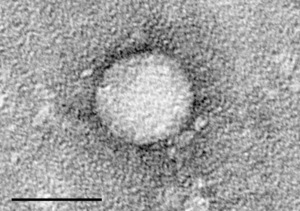The treatment of hepatitis C virus infections has taken a major step forward with the U.S. Food and Drug Administration’s approval of two new drugs, telaprevir and boceprevir, for managing the disease.
Blocking the same viral protein as the first anti-HIV drugs, they are also the latest chapter in an ongoing story of medical success.
Telaprevir and boceprevir are protease inhibitors, thwarting the activity of key viral enzymes. The first in this class of drugs was saquinavir, available since 1995 for the treatment of HIV. Several protease inhibitors have subsequently been developed for HIV, but the new hepatitis C drugs are the first to tackle other viruses.
The protease targeted by the anti-HIV and anti–hepatitis C drugs is involved in a process called cleavage. These viruses insert their RNA into the host cell. That genetic information is then used to create a single, long strand of proteins, called a polyprotein, that must be chopped up, or cleaved, into its distinct components for the virus to replicate. Protease enzymes perform that job. Protease inhibitors bind to the active part of a key protease, rendering it unable to cleave the polyprotein.
After the success of protease inhibitors in HIV, research groups around the world began investigating whether the same mechanism would work for hepatitis C. In 1997 Charles M. Rice, now head of the laboratory of virology and infectious disease at the Rockefeller University, showed that mutating the viral protease in hepatitis C–infected chimpanzees stopped the virus, the first clue about the enzyme’s importance. Subsequently, molecular virologist Ralf Bartenschlager of the University of Heidelberg in Germany confirmed the vital role of the protease in hepatitis C replication. Many studies later protease inhibitors were ready for commercial hepatitis C drug developers. In trials, telaprevir and boceprevir elicited response rates that were 20 to 30 percent higher than those seen with the older regimen—pegylated interferon plus ribavirin—by itself, an encouraging result.








